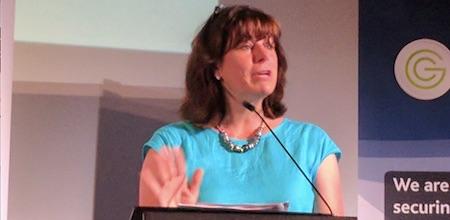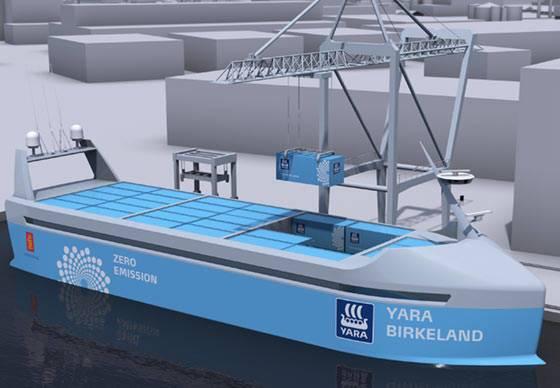Foxconn Chooses Wisconsin For $10 Billion Flat Panel Factory


Talks of a resurgence in manufacturing have receded almost as fast as the new presidential administration has promised retaining and increasing factory jobs, but at least one global manufacturer says it will open a new factory in the U.S. - and it is going to be "YUGE."
After days of conflicting news reports, Foxconn, one of the most critical companies within Apple's supply chain, announced it will build a new factory in Wisconsin. The company had said it is willing to invest anywhere from $7 billion to $10 billion in either the upper Midwest or North Carolina. After promises that the plant would hire as many as 13,000 workers, Foxconn now suggests 3,000 workers would be employed there.
No, that does not mean your iPhone or iPad will at least be partially manufactured in the U.S. at any point soon. An American-made smartphone or tablet will not anyone's reality this decade, despite the U.S. president's boast that Apple CEO Tim cook "promised" him that the global gadget giant could build three plants within the U.S. in the near future.
Over the past year, Foxconn was wavering over a decision to launch any operations on American soil at all. Earlier this year, the Taiwan-based electronic components manufacturer appeared to quash talk over the possibility of a factory, saying during the early days of the Trump Administration that a U.S. plant was more of a "wish" instead of an outright "promise." Then during the past spring, rumors abounded that a Foxconn U.S. factory making iPhone and iPad displays could be on the drawing board after all. As summer approached, Bloomberg reported that seven states were in the mix, as Foxconn's chair Harry Gou suggested one or more factories were a distinct possibility.
It turns out that instead of small displays for smartphones and tablets, a new Foxconn factory would manufacture large-sized flat screen television panels, which makes sense financially for the company as those components are expensive to ship across the Pacific from Asia.
A feeding frenzy had been underway as U.S. states stepped over themselves to lure Foxconn with tax credits and other financial incentives - not too dissimilar from three years ago, when states such as California pulled out all the stops for Tesla's first gigafactory. That massive plant is now emerging on a site just outside of Reno, Nevada. Earlier this week, the Milwaukee Journal Sentinel and other news outlets have reported that Wisconsin is in the lead for the Foxconn plant. Racine and Kenosha counties had been considered frontrunners; Janesville, home of U.S. Speaker of the House Tim Ryan, is apparently off any short list.
The prospect of landing almost 10,000 jobs would be a huge win for any politician; Janesville's selection certainly would have helped cement the on-again, off-again fleeting relationship between Speaker Ryan and President Trump. But as an op-ed in a local Janesville reminded readers, a town's reliance on one massive employer can cause growing pains and spikes in housing prices - and then a massive economic slump in the event that a company decides to leave a one-employer town, as what occurred when General Motors jilted the city of 64,000 people a decade ago.
Meanwhile, Wisconsin Governor Scott Walker was reportedly meeting behind closed doors mulling potential offers to Foxconn worth up to $2 billion in order to lure the manufacturer to the Badger State. News reports have estimated the total to now be $3 billion; any package would have to be approved by Wisconsin's state legislature. The windfall that Foxconn could land will certainly raise questions whether it is worth sticking state taxpayers with a huge bill in order to pad Walker's resume as he heads into an election year - and short of the 250,000 new jobs in Wisconsin he promised during the last election season.
The deal was announced in the White House East Room, and President Trump took credit for making the factory a reality. But as several news reports have pointed out, Foxconn has a history of making big press-worthy statements. In 2013, the company said it would open a factory in Pennsylvania that would hire 500 workers. But after the news stories faded and politicians moved on to other matters, Foxconn never launched that factory. Similar promises have fizzled in Brazil, Vietnam, Indonesia and India.
Image credit: Matt Wakeman/Flickr
Vail Resorts Promises an 'Epic' Zero-Carbon Footprint by 2030


Vail Resorts, one of the largest mountain resort operators on earth, announced this week that it has committed to a "zero net operating footprint" by 2030. By the end of the next decade, the company says it will revamp its entire operations based on three pillars: zero net emissions, zero waste to landfill and a zero net operating impact on forests and local ecosystems.
This is quite a promise by Vail Resorts, which runs several iconic ski resorts across North America. Its properties read like a winter to-do list for the jet set. Starting with Vail, of course, the company also manages the Colorado ski resorts Breckenridge, Keystone and Beaver Creek. In Utah, Park City, adjacent to venues that hosted some 2002 Salt Lake Winter Olympics events, also is part of the company's portfolio. Surrounding Lake Tahoe, nestled between California and Oregon, is home to Vail Resorts' Heavenly, Northstar and Kirkwood.
All of these resorts boast timeless brands and enduring popularity. And therein lies the challenge for Vail Resorts: making all of these properties a more responsible tourism experience, while catering to a clientele who, as in the case of most people who travel, behave quite differently while they are on the road compared to how they conduct themselves at home. And those behaviors include "being sustainable." The company says it will provide guests with information and opportunities for them to decrease or offset their carbon footprint; but as the literature has proven over the years, such efforts at best show mixed results. After all, customers are often unaware of such programs - or they just choose to ignore them.
On that point, Vail Resorts cannot control their guests as they drive their gas-guzzling SUVs hauling heavy equipment to and from their mountain ski resorts (as well as their "urban resorts" in Wisconsin, Minnesota and Michigan). But the company can control the energy efficiency performance of their hotels, lodges and other venues. First, Vail Resorts will invest $25 million in a move to reduce the company's natural gas and electricity consumption by another 15 percent. So far, the companies' properties in total have reduced their energy use by 19 percent since 2008. Other projects include harnessing low-energy artificial snow equipment, implementing green building design and construction as well as investing in more efficient grooming practices and equipment.
Vail Resorts says it will purchase the equivalent of 100 percent renewables to offset its conventional power consumption. Other steps, of which Vail Resorts shared few details, include tree planting and working with suppliers to make sure their business practices become more sustainable.
More realistic is Vail Resorts' second pillar, its zero waste initiative. The company says its waste diversion rate currently stands at 40 percent; the goal is to boost that ratio to 50 percent by 2020 and then 100 percent a decade later. The steps are fairly standard: more recycling and composting; working with vendors to reduce packaging waste; and communicating with staff and guests about these programs in the first place. As Vail Resorts will find out, it is easy to put recycling bins in every guest and conference room. Nevertheless, ensuring that waste is taken care of properly always poses a big question mark. On this front, the company actually has a huge opportunity to develop new ideas or business practices that it could share with the hospitality industry so that it can become more responsible and less wasteful.
Finally, the company says it will strive to have zero operating impact on forests. Many ski resorts exist because more than a few trees here and there had to be felled. Organizers of next years Winter Olympics in South Korea, for example, have been harshly criticized for removing a 500-year-old "sacred forest" to pave the way for a ski slope. Vail Resorts infers that deforestation will no longer be the result of any current or future resorts. The company has also promised to restore an acre of forest for every acre of forest eliminated by its operations. Other somewhat nebulous promises include "minimizing or eliminating" any impact of future resort development, as well as continuing its commitment to working with NGOs in addition to funding them.
Image credit: Snow Snow/Flickr
What Investors Need to Know About Sustainability Rankings


By Nancy Himmelfarb
Two sustainability rankings posted 2017 results in June: the 2017 Sustainability Leaders Survey and the Reputation Quotient on corporate social responsibility. Are these and other sustainability rankings meaningful to you as an investor? Certainly for Corporate Knights’ Global 100 ranking, the answer should be “yes.”
Earlier this year, Forbes writer Jeff Kauflin wrote, “If you had invested $100 in Global 100 companies in 2005, it would have been worth $232 at the of 2016. If you did the same for the ACWI, you’d have $208. In other words, the Global 100’s cumulative return is 24 percentage points higher than the ACWI benchmark.”
Whether you consider environmental, social and governance (ESG) criteria when making investments, you invest only in socially responsible companies, or you do not pay much attention to ESG criteria, it helps to understand where sustainability rankings fit in – separate from ESG funds and indices such as the Dow Jones Sustainability Indices.
Many rankings focus on ESG criteria or “sustainability” (broadly defined to include environmental sustainability, social responsibility, ethics, etc.) Some so-called sustainability rankings are issue-specific, while others cover multiple specific issues and key performance indicators (KPIs) on each. Some rely on publicly available data, while others use surveys to collect information. There is no consensus among the raters on what constitutes a good company.
By understanding the scope and methodology of certain key sustainability rankings, you can monitor those that mean the most to you and the companies that you follow. Are you interested in monitoring ESG or sustainability performance primarily to mitigate portfolio risks related to climate change; as a way to avoid companies with unethical conduct; or as an opportunity to support companies that could outperform their peers by integrating sustainability in their operations? Follow those that meet your objectives.
Click here to view a high-level summary of current details on several key sustainability rankings (starting with the two recently published rankings).
Raters’ use of different methodologies make it difficult to compare company scores across multiple rankings. A company might score very high on one ranking and low (or not at all) on another, and its ranking might fluctuate dramatically year-by-year under any single ranking. Part of the challenge is that individual raters periodically change their methodologies to reflect new risk calculations, disclosure practices, etc. For example, Corporate Knights added two new metrics to the Global 100 ranking methodology for 2017: the supplier score and clean air productivity score. The changes likely contributed to the increased turnover rate for 2017 results – from 25 percent in 2016 to 34 percent in 2017. This volatility in ratings outcomes, coupled with the myriad of different indicators, poses big challenges for investors. Notably, analysis in the current issue of The CPA Journal came to the same conclusion based on a review of rankings from three agencies.
Nevertheless, it is worthwhile for you to pay attention to key ranking results. Focus on the rankings that matter the most to you and conduct additional sustainability due diligence, using the rankings primarily as a way to engage with companies on their performance and plans for improvement. For instance, you could ask companies these questions:
- Ranking: Why is your company listed/not listed on a specific sustainability ranking? Why do some peer companies rank higher?
- Materiality: Has your company conducted a materiality assessment of the economic, environmental and social/ethical impacts of the business? If not, why not?
- Management approach: What is your company’s vision, strategy and key priorities related to managing material impacts of the business? What are short and long-term goals? What procedures ensure accountability and transparency on the company’s performance?
Company reporting helps too. Organizations such as SASB, GRI and IIRC have developed reporting frameworks that are designed to elicit material sustainability information from companies – the information that is particularly useful to you as an investor. Though formal sustainability reporting is far from universal among U.S. companies of any size or type, reports and other disclosures, together with sustainability rankings, are important tools for due diligence and company comparisons.
New UK Minister hails flourishing cleantech ecosystem


EU Commission issues guidelines to strengthen CSR reporting


All-Electric, Autonomous Container Ship Sets Sail in 2018


You have heard a lot about self-driving cars lately, and perhaps some noise about the occasional autonomous semi-truck; after all, autonomous shipping along U.S. highways is reportedly Tesla's next venture. Now two companies in Norway are joining forces to launch what they say will be the first zero-emissions ship that will also navigate the Scandinavian country's waters driver-less, or should we say, captain-less.
Kongsberg, a defense and maritime company which takes the same name of the town in which it is located, has partnered with the chemical company Yara on this venture.
Their soon-to-be finished product is the Yara Birkeland, an open-top shipping vessel that will be able to haul anywhere from 100 to 150 shipping containers. At 230 feet long, 49 feet wide and 30 feet deep (in metric, 70x15x12 meters), this ship will be able to move anywhere from six to 10 knots per hour. Yara and Kongsberg say the ship's electric propulsion system will be powered by a battery system with the might of 4 megawatt hours, or the equivalent of 40 automobile engines.
Making this ship stand out even more is the companies' insistence that this vessel will eventually operate fully autonomously. Plans call for the Yara Birkeland to haul goods between the ports of Porsgrunn, Brevik and Larvik. Company executives told one design publication that the ship will replace up to 100 daily diesel-fueled trucking hauls.
Reports say that the first trips next year will be staffed, but in 2019, the ship will be controlled manually, with complete autonomy occurring at some point in 2020. Three various operations centers will monitor the ship's performance, and loading and unloading the vessel will occur automatically using electric cranes and other equipment. The Yara Birkeland's mooring system will function autonomously as well.
If this project becomes reality, it will be a huge step forward for the United Nations, which has called for improved environmental stewardship of the world's oceans, even as it acknowledges that maritime shipping is overall the most efficient means of moving goods across the globe. Global shipping is projected to triple by 2030 from 2000 levels, and is projected to account for 17 percent of global emissions by 2050.
Goal 14 of the UN's Sustainable Development Goals (SDGs) calls for maritime resources to be harnessed in order to protect the high seas. While this SDG is focused on ecological issues such as ocean acidification, many maritime companies have publicly embraced Goal 14 as part and parcel of the sustainability and corporate responsibility agendas. The shipping giant Maersk, for example, has said it will comply with international maritime organizations' directives to cap sulfur oxide and nitrogen oxide emissions over the next several years.
Environmental agencies worldwide say such measures are necessary in order to reduce the risks of ocean acidification, which has long been linked to ships' emissions. Depending on the source cited, maritime transport is responsible for approximately 2.5 percent of emissions worldwide. But as more countries ink trade agreements, some estimates have suggested that ratio could surge to as high as 17 percent if left unchecked. The bunker fuel used by many ships is the big culprit, as it has an exponentially higher sulfur content than the fuel used for road transport, according to a report in Scientific American.
Cooperation between maritime companies, however, has proven to be an easy talking point. As pointed on publications including the Guardian, any agreement has been difficult to achieve in practice. The shipping industry is the only worldwide sector not subjected to any global climate change goal. Policy makers have often lost patience with logistics trade groups including the International Maritime Organization, which has pledged to agree on limits to the amount of sulfur in fuel. Current levels of sulfur in bunker fuel can be as high as 3.5 percent; by 2020 that level will be limited to 0.5 percent, though many companies had hoped to delay that deadline to 2025.
We are still in the wild west of autonomous vehicles and vessels, so all eyes will be looking north towards Norway - which itself is an oil-rich nation that has pledged its own ambitious sustainability plan, only to be criticized to being sustainable at home while simply exporting its carbon emissions abroad. If this ship can deliver what Kongsberg and Yara have promised, we could eventually live at a time when we will feel a tad less guilty about ordering goods online; most of which, of course, are made overseas.
Image credit: Kongsberg
Op/Ed: NRG Sustainability Commitments Stronger Than Ever


By Bruno Sarda
I proudly joined NRG exactly one year ago as the new head of sustainability, knowing I was joining the power sector at a time of rapid transformation. It’s an exciting time of technology and business model innovation, but it’s also a time of uncertainty. The surest thing we know about the future of power is that it won’t look like the past.
On July 12, 2017, NRG unveiled a transformation plan aimed at simplifying and streamlining the business. [Ed. note: for NRG this meant divestiture of 50 to 100 percent of the company's interest in NRG Yield Inc and its renewables platform] The actions detailed in the plan are designed to strengthen our balance sheet and make NRG better positioned to capitalize on future growth opportunities. Part of that plan involves reevaluating the way we participate in the renewable energy market even as we continue to see renewable energy as an essential part of the energy mix today and in the future. This led some stakeholders to ask whether our commitment to a sustainable energy future, or to being a sustainable company, had wavered. My answer to both is firmly - no.
How can this be? It begins with what we’ve previously coined “The Four Product Future:” our view of the four technologies that have the potential to transition the power sector to a low-carbon future. The first product is the deployment of renewables at scale. The other three – storage, controllable demand, and fast-ramp gas – are critical systems meant to ensure the first can be successful, and reliable. Significant market opportunity exists for companies that are able to apply their expertise and market position in support of this vision, and NRG is already well-positioned and active in these systems.
Beyond market enablement, it should be understood that sustainability permeates NRG’s entire business and operations. Earlier this year, we expanded on prior goals to unveil a five-pillar sustainability platform with commitments across our value chain: suppliers, operations, business, workplace and customers. Make no mistake, these goals and their supporting initiatives remain unchanged by our announced transformation plan.
Perhaps our most visible goals are those that relate to addressing climate change, where NRG has been at the forefront in many areas. In 2014, we set industry-leading, science-based goals to reduce absolute greenhouse gas (GHG) emissions 50 percent by 2030 and 90 percent by 2050.
These goals can only be met by reducing the carbon emitted by our conventional power generation assets – not by diluting our carbon profile through adding low-carbon assets like renewable generation and storage solutions. Today, the key levers we’re using to make progress include coal-to-gas switching, plant retirements and shifting from baseload to flexible fast-start generation capacity. As of the end of 2016, we had already reduced GHG emissions by 36 percent, more than two-thirds of the way to our 2030 milestone. New technologies are coming to the market regularly, so we don’t necessarily know all the additional levers that will emerge to help us meet these goals – but we’re already ahead of schedule and I like our odds of meeting or exceeding this goal by 2030.
And sustainability at NRG extends beyond GHG reductions. As demonstrated by our sector-leading supply chain GHG and water goals and sector-first SASB disclosure in our 2016 Sustainability Report, we are not standing still.
Sustainability in the retail and wholesale electricity sectors is important and challenging work – with enormous potential positive impact. I’m proud to work alongside some of the most dedicated and talented individuals in corporate America who are doing meaningful and impactful work to make their companies’ operations, supply chains, products and workplaces more sustainable.
The future is both exciting and uncertain. We know many things will change between now and 2030, let alone 2050.
Along the way, you can count on NRG to stay true to our sustainability commitments and to remain transparent about our progress.
As NRG implements our transformation plan and gains strength and flexibility from a more streamlined structure and a significantly lower debt posture, we will be able to implement an updated plan to continue forward on our path to a lower-carbon future.
Image credit: NRG
Tiny Houses: A Salve for Tomorrow's Housing Shortages?


Let's face it: Tiny houses are cute. For many of us, they may seem reminiscent of that secret tree house or play home that Dad tucked away at the back of the property, a place where everything seemed simple, comfortable and above all, was yours.
These days, they are more than endearing memories. In many cities they offer answers for complex problems, from housing options for homeless families in high-rent or low-availability areas, to quick, do-it-yourself residences for on-the-move couples who want the flexibility of keeping their environmental footprint small and their expenses light.
And the tiny home concept doesn't fit every housing code. Many municipalities have struggled to set clear, fair guidelines for putting a teeny house on a city lot:
- The city of Fresno, the first in California to amend its codes to allow for tiny houses allows the structure to be on wheels. Some areas in the county have stricter requirements.
- Walsenburg Colo. will permit a house if it is on a permanent foundation, which of course, ups the cost of that tiny living space (and decreases the chance of a temporary structure)
- While some cities prefer to draw lines between the definition of an RV (recreational vehicle) and a tiny home for permitting purposes, others make less fuss about the distinction. And in some RV parks, a tiny home is an accepted "recreational" domicile, opening the opportunity to residents renting long-term.
- Some cities have realized that small can be not only elegant but a true money-maker. In a growing number of states around the U.S. tiny home communities offer the chic answer to minimalist living and going green at the same time.
- And then there are cities that, well, haven't quite caught on to the idea of a do-it-yourself mini pad that limits both footprint and cost. The city of Vancouver, BC Canada recently charged a landlord with bylaw violations for renting to a couple with a tiny home. It's a surprising turn of events for a city best known for its postage-stamp apartment dwellings and its burgeoning housing problem.
In the decade or so of living in tiny environments (first on small vessels off shore and later in RVs), my husband and I have come to appreciate a few truisms about the less-than-300 square-feet lifestyle.
The most important is, it's not for everyone.
Living small is a state of mind, much like living green. As Gene Tempest points out about a 492 square-foot apartment, you learn patience with your environment. A lot of patience.
It demands boundaries far stricter than permitting restrictions imposed by city codes. That extra box of books may find its home on your one laundry/storage shelf, but the second box of expensive dinnerware becomes extraneous or relegated to the storage unit 20 miles away. Grocery shopping is defined by space as well. You may really want that family size bag of chips but where do you put it?
You become schooled in green living 101 instantly. Reuse makes sense. Allocating space for recycling is a cumbersome challenge. Minimizing water usage becomes a functional necessity.
And as two researchers currently investigating tiny house communities point out, there's not just environmental benefits to downsizing your living environment, but health benefits as well. Kansas State University researchers, Brandon Irwin and Julia Day believe that there may be an argument for promoting the social benefits of tiny home communities in today's ever crowded cities. Irwin is an assistant professor in kinesiology and Day is an assistant professor in interior design.
"We think [living in tiny home villages] does a few things for one's health," said Irwin, "including creating a better sense of community, satisfying people's basic needs for relationships, offering affordable housing options and encouraging physical activity through community gardens and walking to urban establishments."
Will minimalist living really become a fad? It's hard to imagine. But cities are already feeling the pressure to address the needs of residents willing to settle for a smaller footprint, a tinier floor plan and the peace of mind of an even smaller cost of city living.
Flickr images: Nicolas Bullosa; MIKI Yoshihito; Nicolas Bullosa
This California Dairy Farmer Says He's Got a Carbon-Positive Solution to Fight Emissions


- The Straus Family Creamery electric truck
–
Despite a loud outcry from California's agribusiness sector, Governor Jerry Brown signed a law last fall that aims to cut methane emissions from dairy operations. While some studies have suggested that the livestock industry is actually more efficient and less polluting than in generations past, estimates often suggest that half of the Golden State's methane emissions can be traced to the dairy and beef sectors. Now that California legislators have extended the state's cap-and-trade program to 2030, supporters of the program say now is an opportune time for the dairy sector to explore clean technology options in order to reduce its carbon footprint. Funding for more sustainable and energy-efficient solutions will continue to be available to the state's farmers if they can make the case that they can reduce emissions.
One Northern California dairy farmer says he's been working on one such option for several years, and has succeeded in making his dairy operations carbon positive.
Albert Straus, who's often heralded as a first mover in organic dairy and sustainable agriculture, has revealed what he says is the world's first first full-scale electric truck - powered by cow manure. Straus, whose namesake dairy has become a fan favorite for its organic milk, ice cream and yogurt, said he spent several years working with a mechanic to retrofit a truck used within Straus Family Creamery's operations. The 33,000-pound International Harvester truck is no longer running on diesel; instead, electric power that is generated from an onsite methane gas digester measures, mixes and hauls feed for the farm's 270 cows. While Straus' cows are feeding, they are also dropping plenty of manure, which the dairy farm's workers collect by tractor, dump into a holding pond. From there, the anaerobic digestion process starts and eventually, renewable power can recharge the truck's battery.
The big question is, could Straus' contraption actually scale? The California Air Resources Board (CARB) has said the goal to reduce the state's emissions 40 percent by 2030 could be largely met by converting cow manure into renewable power.
For Straus, the overall benefit has been to make his dairy farm carbon positive while weaning its way off of fossil fuels. The company estimates that it has prevented the release of 18 metric tons of CO2 into the atmosphere annually. As Straus has been an early adopter of clean technology, he received no financial incentives from the federal or state governments. The cost of the truck's retrofit was approximately $130,000, and he expects his return on investment to pay off anywhere from eight to 13 years. By going electric, Straus concluded he saves about $7,200 in diesel purchases, as well as about $3,000 in eliminated maintenance costs. New diesel trucks such as the one Straus runs costs anywhere from $65,000 to $100,000; replacing the diesel motor with an electric one costs approximately $30,000; he suggests that eventually replacing that diesel motor costs about $20,000 every 10 years.
The question for farmers, and the state of California, is if such an ROI is acceptable to dairy operators. California would also have to decide if it should also offer tax credits or grants to motivate farmers to make such a switch and decrease the number of years it takes to achieve a competitive ROI.
Straus has also inferred that his retrofitted truck could also shake up the emerging electric semi-truck industry. Start-ups, along with electric vehicles juggernaut Tesla, are striving to score a head start within this sector. But Straus insists that he is the first to use a full-scale electric feed truck into use, two months before Tesla's electric semi-truck will reportedly make its debut.
"My electric feed truck is not only a practical tool for my farm. It is also a symbol of the resourcefulness we need to fight climate change, which threatens our business and the future of American farming," said Straus in a public statement.
In addition to the manure biogester, which has been generating power for over a decade, Straus and his dairy have tackled other sustainability initiatives. Partnering with the Marin Carbon Project, Straus' 500-acre spread is California’s first dairy to develop a 20-year carbon farming plan with the goal to sequester 2,000 metric tons of carbon annually. Straus says he also has plans to reveal an all-electric truck to transport his company's products to local markets in the Bay Area.
Image credit: Straus Family Creamery
Pruitt's EPA Faltered on Pesticide So Legislators Take Up a Ban


Yesterday, U.S. Senator Tom Udall of New Mexico introduced a bill that would ban chlorpyrifos, a pesticide some research says can be linked to learning disabilities as well as severe health problems. Earlier this year, the Environmental Protection Agency (EPA) denied a petition urging a ban all forms of chlorpyrifos. The decision by EPA head Scott Pruitt was harshly criticized by several environmental groups, which said the agency's own research found considerable risk to public health. Shortly after Pruitt's ruling, Udall sent a letter to the EPA administrator demanding answers for the reversal.
Some scientists, and the U.S. Department of Agriculture (USDA), say that fears over chlorpyrifos are overstated and are safe at low levels of exposure. And Dow Agrosciences, a leading manufacturer of chlorpyrifos-based products, insists that the science has rigorously proven that the chemical is not dangerous when farmers apply and manage the chemical safely. The chemical has been banned from residential use since 2001, but is still widely used in agriculture. In California chlorpyrifos is reportedly widely used for four crops: alfalfa, almonds, citrus and cotton.
"This is the right decision for farmers who, in about 100 countries, rely on the effectiveness of chlorpyrifos to protect more than 50 crops," said Dow in a public statement shortly after Pruitt announced the chemical would not be banned.
But NGOs including the Natural Resources Defense Council (NRDC) insist that with over 3,000 studies concluding that chlorpyrifos exposure at any level is unsafe, evidence that the chemical has appeared in some sources of drinking water behooves the EPA to ban the product. NRDC has quickly lined itself up in support of Udall's bill.
“This bill tells the chemical industry that our children’s health and safety are not for sale. Families shouldn’t have to worry the fruits and veggies they feed their kids could do them harm," said NRDC's president, Rhea Suh, in an emailed statement to TriplePundit. "Farmworkers shouldn’t have to fear that they might be exposed to toxic pesticides in the fields or that their children or will be poisoned if it drifts into in their communities. Our leaders in Washington must stop playing politics with children’s health.”
Image credit: Roger Smith/Flickr